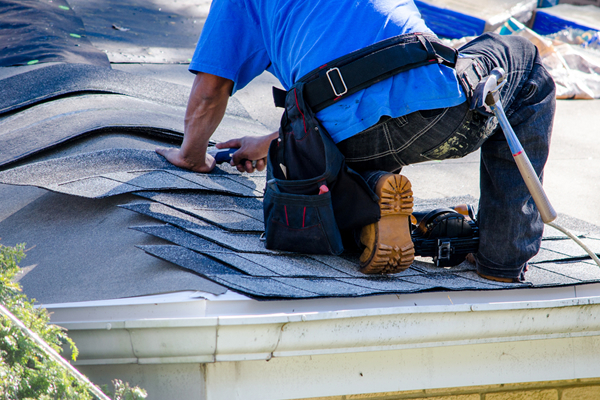Spotting Common Signs of Roof Damage
Author: Barbara Horwitz-Bennett | April 21, 2021
Even with the best roofing systems, eventual repair and replacement are inevitable, and sometimes expensive. HomeAdvisor reports that roof repairs cost the average homeowner $920. A new roof could cost ten times that, so it's important to learn how to recognize a problem early on.

In order to nip roof damage in the bud before being straddled with more costly roof replacement, homeowners need to know how to spot the signs of roof damage, such as water damage, rot, decay, mold and moss.
Water Damage
Perhaps the most common problem with roofs is water leaks and damage. According to American Dream Restoration, water problems can manifest as dark stains or dark streaks on the roof's underside, or stains running down the walls from the base of the roof. Water stains inside your home on the attic rafters or ceilings are also a red flag.
Over time, water damage can cause roofs and ceilings to sag. Look for wrinkling or bowing inside and outside your home. Gently prod potentially damaged areas with your hand or a broom handle to pinpoint weak or soggy spots. If left unattended, leaks and water damage can eventually lead to mold and rotting that can compromise your home's infrastructure.
Rotting and Cracking
Generally speaking, wooden shakes and asphalt are the materials that are most likely to rot. (That coated steel roof isn't going to grow mold anytime soon.) The telltale signs of rot include moldy buildup on a group of tiles or crumbling and missing shingles. Sometimes the full extent of the rot is invisible until a contractor begins to strip off the shingles.
Moss growing on your roof can be a sign that rot is in your future, cautions Nationwide. As spores build up and spread out between the shingles, mats of moss begin to store rainwater, which wicks underneath the shingles, soaks the underlayment and ultimately rots the roof sheathing.
Another issue to look out for is decay and cracking, which shingle roofs are more prone to developing. Cracking, curling, buckling or outright missing shingles are still wasting away even if there's no visible mold. Missing shingles can also be caused by high heat or wind, or even animals such as raccoons, squirrels or rats trying to nest in your roof or home.
Gaps in shingles, stones or tiles expose the roof to further damage from weather or wildlife. Calling a roofer at the first sign of missing pieces can help prevent bigger problems later on.
Check Your Gutters
Gutters should only carry water, or at most a few leaves — discovering shingle pieces or asphalt granules in the gutter means something is awry. If your area experiences high heat, hail or heavy rains, check for compromised shingles and gutters after extreme weather. You should inspect your roof and gutters for damage regularly no matter what the weather brings, especially if your roof and house are old or haven't been repaired in a long time.
If you see any signs of roof damage, it's best to call a reliable local roofer to inspect your home and recommend a course of action. A basic cleanup or repair may be enough to prevent more serious and costly damage down the road.